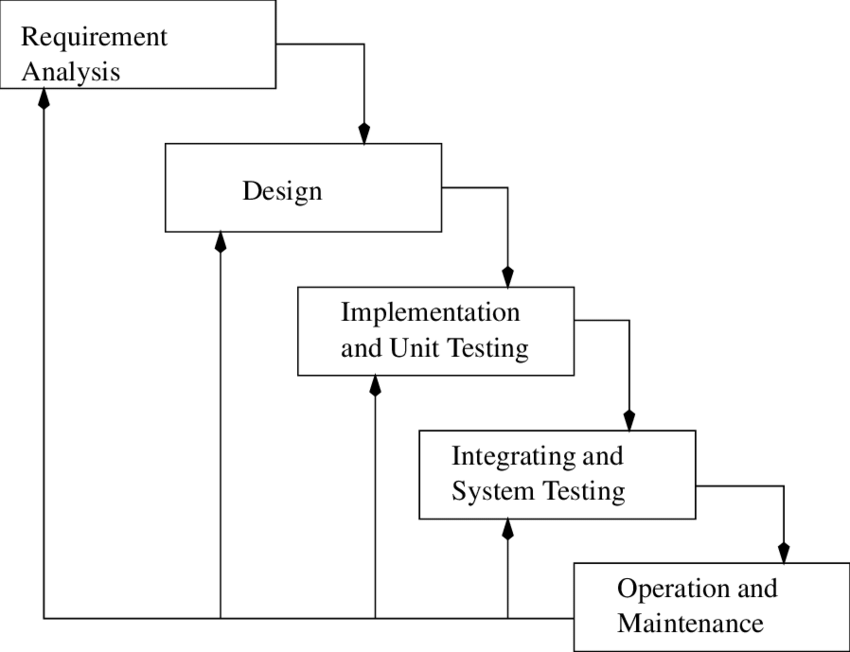
Waterfall model
The waterfall model was the first SDLC Model to be used widely in software engineering to ensure the success of the project. The waterfall model is the whole process of software development which is divided into separate phases. The different phases of the waterfall model are:

- Equipment gathering and analysis:
- System design:
- Implementation:
- Integration and testing:
- Development of system:
- Maintenance: Equipment gathering and analysis:
All possible requirements of the system to developed are captured in this phase and documented in a requirement specification DOC.System design:
The requirement specifications from the first phase are studied on this phase and system design is prepared. System design helps in specifying hardware and system requirements and also helps in defining overall system architecture.Implementation:
With input from system design, the system is the first developed in small programs called units, which are integrated into the next phase. Each unit is developed and tested for its function, which is referred to as unit testing.Integration and testing:
All the inputs develop in the implementation phase are integrated into a system after testing each unit.Development of system:
Once the functional and non-functional testing is done the product is deployed in a customer environment or released into the market.Maintenance:
If there is some issue that comes from off into the Clint environment to fix those issue patches are released also in hence the product some better versions are released. Maintenance is done to deliver these changes in the customer environment.
you may also like Cross Life-Cycle Activities

Leave a Reply